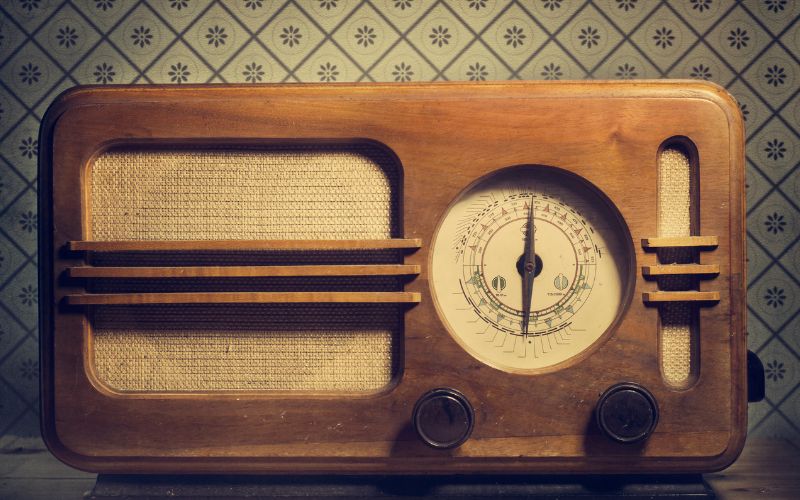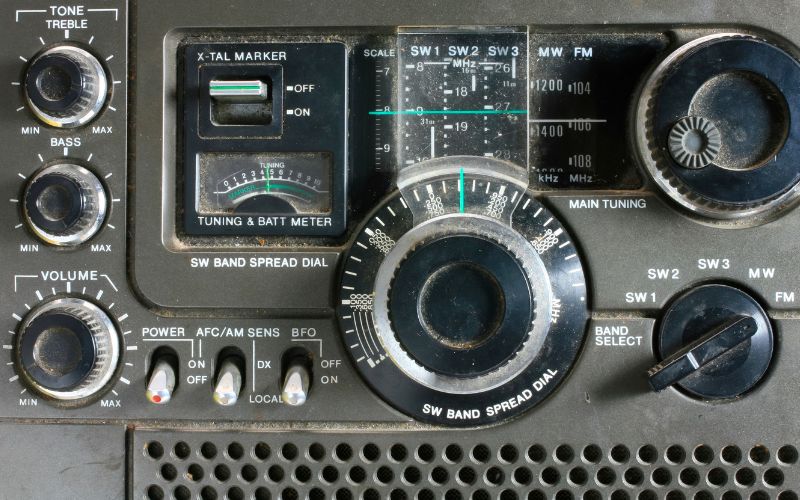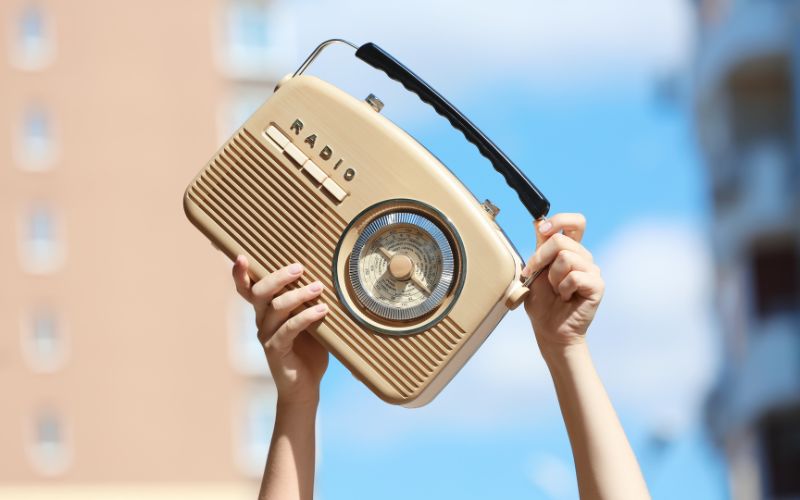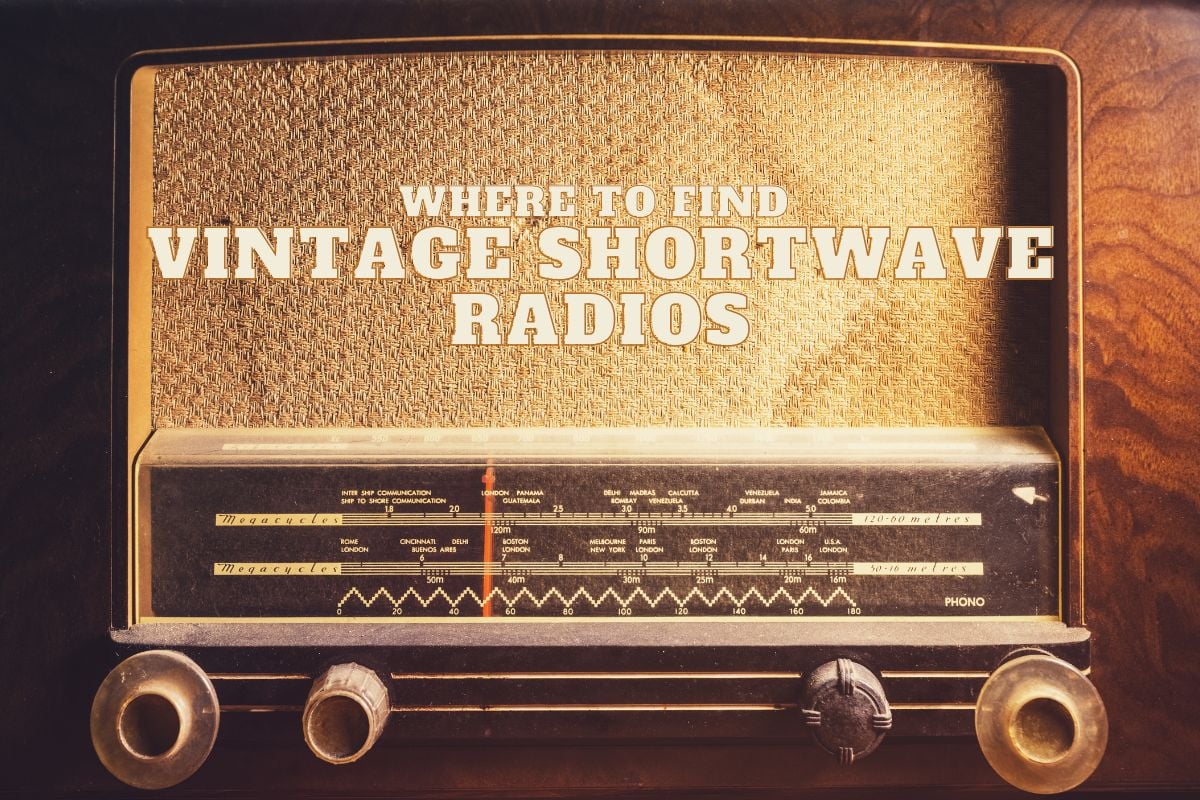Are you a collector, a history buff or just fascinated by the technology of yesteryear? Then you are exactly right here! Explore the world of classic shortwave radios with us and discover the beauty, history and nostalgia of these radios.
From the early crystal sets to the legendary tube powered radios of the mid-20th century, we’ll take you back in time to learn more about shortwave radio technology, how these radios work, and how to build your collection.
So sit back, relax and tune in to the past with us as we explore the world of classic shortwave radio!
What are vintage shortwave radios?
Classic shortwave radios are radio receivers that can receive shortwave frequencies, typically between 1.6 and 30 MHz.
These radios were popular in the early to mid-20th century but have since been superseded by newer technologies such as the internet and satellite radio.
The importance of vintage shortwave radios
Classic shortwave radios have a special place in history. They allowed people to tune in to international broadcasts and keep abreast of global events when information was less readily available.
The history of classic shortwave radios
From its humble beginnings as a tool for maritime communications and international broadcasting to its role in connecting people in times of war and uncertainty, the history of shortwave radio is rich and fascinating.
Let’s take a look!
Early Development and Advances
Classic shortwave radios have their roots in the early 20th century, with the first shortwave radios being used in the 1920s.
Large and bulky, these early radios were primarily used by government and military organizations.
Technological advances occurred rapidly in the 1920s and 1930s, leading to the development of more compact and affordable shortwave radios, making them accessible to a larger audience.
Popularity during World War II and the Cold War
The popularity of vintage shortwave radios increased significantly during World War II. They allowed people to keep abreast of global events and listen to international broadcasts from distant lands.
The Cold War also contributed to the popularity of shortwave radio, allowing western listeners to receive broadcasts from behind the Iron Curtain.

The decline in usage with the advent of newer technologies
With newer technology, the use of vintage shortwave radios declined.
The rise of global communications made it possible to access information from anywhere without the need for a radio.
As a result, fewer people saw the need to own or use shortwave radio, leading to a decline in production and use. Nowadays they are collector’s items or hobbyist devices.
How vintage shortwave radios work
From the basic components of shortwave radios to the principles of radio wave propagation, we’ll break it down and make it easy to understand.
Let’s take a look into the fascinating world of shortwave radio technology and discover the magic behind how shortwave radios work.
What are shortwave frequencies?
Shortwave frequencies, also known as radio frequency (HF) bands, are a range of radio frequencies that range from 1.6 to 30 MHz.
These frequencies can travel great distances, making them ideal for international communications.
Classic shortwave radios can tune into these frequencies so that the listener can receive international broadcasts.
Components of a vintage shortwave radio
A vintage shortwave radio typically includes the following components: an antenna, a tuner, an amplifier, and a speaker.
The antenna receives the radio waves, the tuner selects the desired frequency, the amplifier amplifies the signal, and the speaker reproduces the sound.
In addition, many vintage shortwave radios have a built-in clock, headphone jack, and S-meter to measure signal strength.
How do shortwave radios work?
The antenna catches the radio waves and sends them to the tuner. The tuner selects the desired frequency.
The amplifier then amplifies the signal. Finally, the detector, using a diode or a heterodyne circuit, converts the radio waves into an audio signal through the radio’s speaker(s).

Shortwave radio signals can travel great distances by bouncing off the ionosphere, a layer of the Earth’s atmosphere that is ionized by solar radiation.
Radio waves can travel around the curvature of the earth, allowing communication thousands of miles.
maintenance and repairs
Like any other electronic device, vintage shortwave radios require regular maintenance to ensure they are working properly.
This maintenance may include cleaning the components, replacing old or worn parts, and realigning the radio’s circuitry.
Many of the repairs are easy to carry out, however some may require the assistance of a professional.
It helps to know basic maintenance and troubleshooting procedures, but you should always seek professional advice if you need clarification on repairs.
Collecting old shortwave radios
One of the best things about vintage shortwave radios is their inherent collectibility.
Not only is their history and technology fascinating, but finding the best examples from years past can be an incredibly rewarding experience!
Here are some tips for finding vintage shortwave radios.
● Look for vintage shortwave radios at antique stores, flea markets, and online marketplaces such as eBay and Craigslist.
● Research the different makes and models of vintage shortwave radios to determine which are the most desirable and valuable.
● Look for radios that are in good working order, as they are easier to restore and more valuable as a collector’s item.
● Be prepared to pay a premium for a vintage shortwave radio in excellent condition as it can be very rare and valuable.
Restoration and preservation of vintage shortwave radios
Using shortwave radio technology that is around 100 years old, vintage radios can be found in a variety of conditions, ranging from new to extremely dilapidated.
Some collectors like the cleaner specimens, while others prefer the challenge of restoring those in less-than-favourable condition to their former glory.
If you fall into the latter camp, here are some radio repair and restoration suggestions.
● Clean the outside and inside of the radio with a soft cloth.
● Test all radio functions and replace defective or worn parts.
● If necessary, realign the radio circuit.
● Store the radio in a dry, cool place to avoid moisture or heat damage.
● Use a UV protective cover or display case to protect the radio from fading or discoloration.
This video shows an old shortwave radio that is being lovingly restored.
Resources for parts and repairs
Online marketplaces like eBay and Craigslist are great places to find replacement parts for vintage shortwave radios.
In addition, many radio enthusiasts and collectors have websites or online communities where they sell and trade parts and provide repair advice.
There are also professional radio repair and restoration services available. Some specialize in vintage radios and can help you restore and repair your vintage shortwave radio.
Enjoy vintage shortwave radios
Not only are these radios beautiful to look at – despite their obvious aesthetic beauty, they are also functional devices that can provide hours of listening pleasure and discourse for the collecting community.
Listening to international broadcasts
One of the main reasons people like classic shortwave radio is the ability to tune in to international broadcasts.
With a vintage shortwave radio, you can hear news and music from around the world and get a unique perspective on global events.

Using vintage shortwave radios for emergency preparedness
Classic shortwave radios can be useful in emergencies as they can receive broadcasts from local emergency services and the National Weather Service.
They also come in handy as a backup communication device during power outages or other emergencies.
Participating in the hobby of collecting and restoring vintage shortwave radios
Collecting and restoring vintage shortwave radios is a popular hobby among radio enthusiasts.
Many collectors focus on specific makes or models, while others enjoy the challenge of restoring a non-working radio to its former glory.
Participating in online communities, attending shortwave radio events and swap meets, and sharing knowledge and experience with other enthusiasts are all part of the hobby.
Final Thoughts
Whether you’re new to the shortwave radio collection or a veteran of the hobby, there’s always something new to learn.
These radios are a microcosm of the past that has had an enormous impact on world history. By continuing your collection, you are making a huge contribution to preserving the legacy of these wonderful devices!

